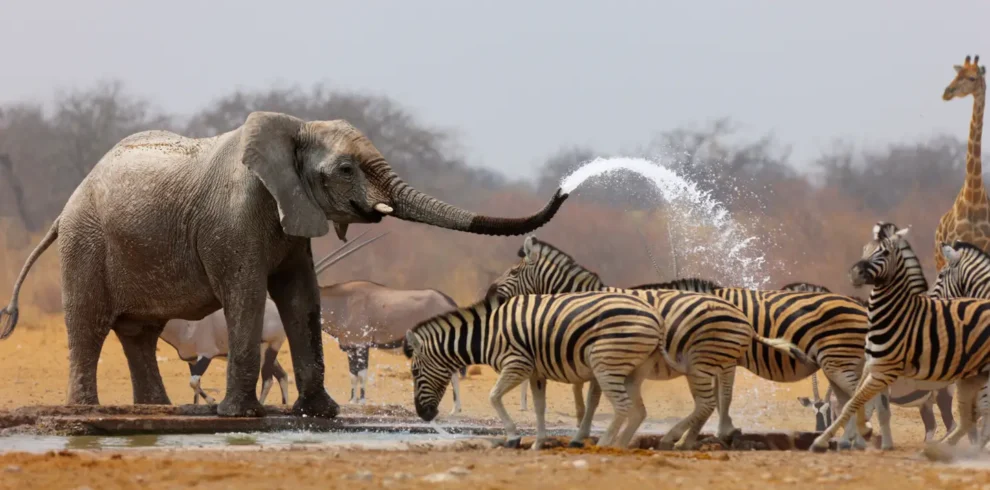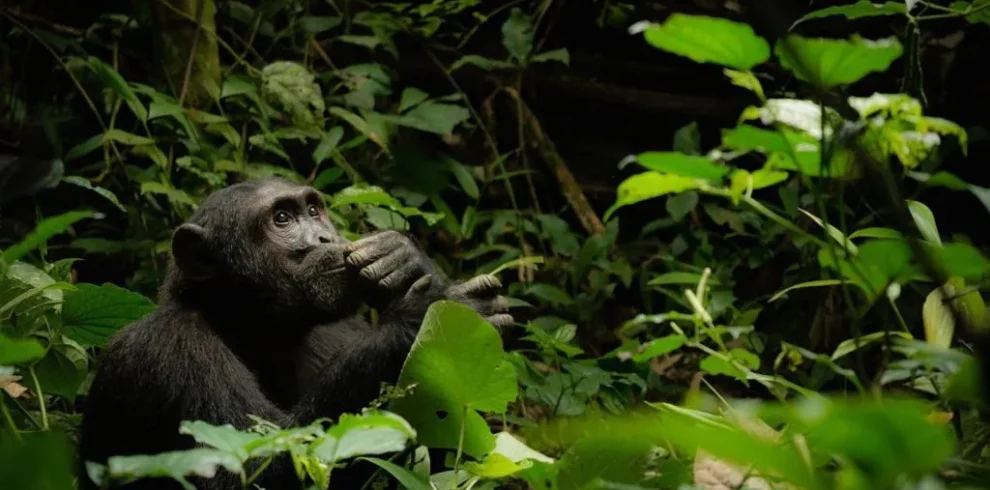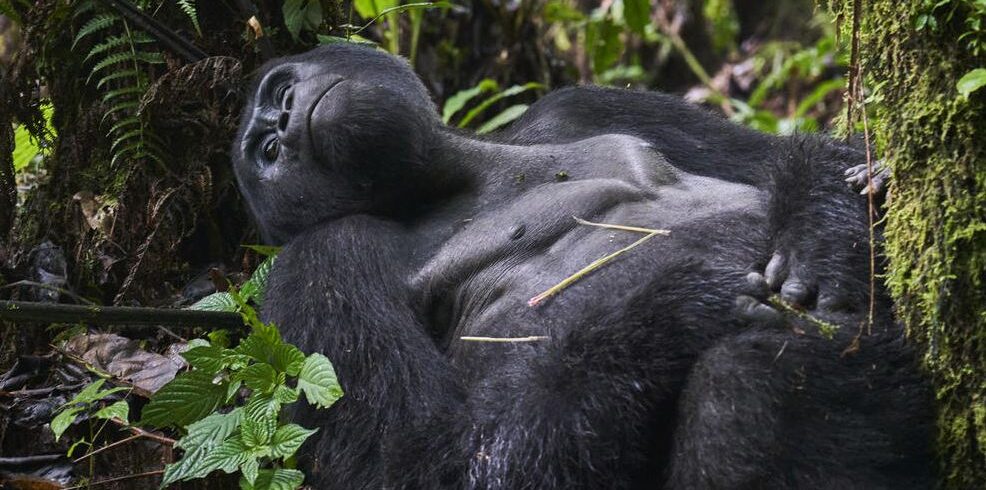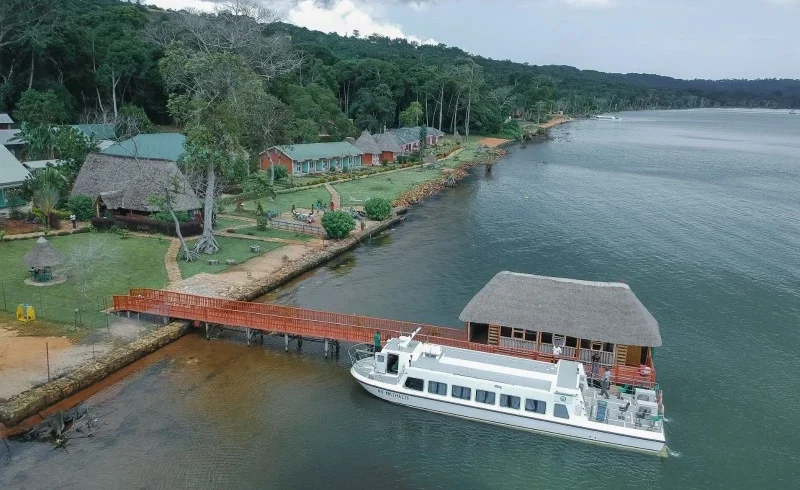The name of the game on your popular 11 Days Etosha, Caprivi, Chobe & Vic Falls Safari is diversity! Desert, mammals, rivers, savannah, birds, waterfalls and more!
Your safari starts in Namibia with a visit to Etosha National Park, seemingly dry and dusty but bursting with life in all shapes and sizes. You will enjoy this gem of a park for four days. Then you will visit the Caprivi Strip of the northeast of the country, a wetland and river wonderland, where you will tour the lesser-known Bwabwata National Park.
Your second last stop of the safari is magical Chobe National Park in Botswana, famous for its huge African Elephant population. Your last destination is Victoria Falls on the Zambia-Zimbabwe border, one of the Seven Natural Wonders of the World.
Itinerary Summary
Day 1: Windhoek to Etosha National Park
Day 2-4: Etosha National Park
Day 5: The Okavango River
Day 6: Bwabwata and Mahango National Parks
Day 7: The Kwando River
Day 8-9: Chobe National Park
Day 10: Victoria Falls
Day 11: Departure
Detailed Itinerary
Day 1: Windhoek to Etosha National Park
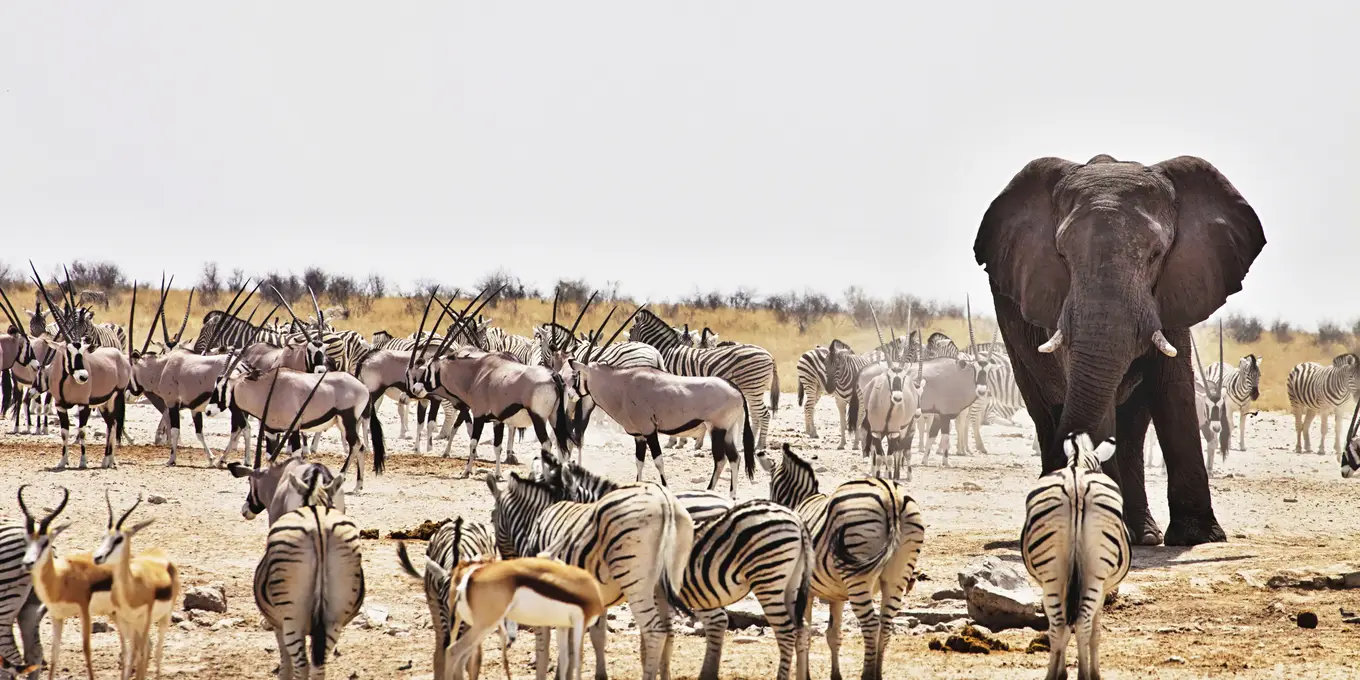
Our guide will pick you from your hotel in Windhoek and set off northwards towards your exciting first destination of this safari; Etosha National Park!
Windhoek, the capital cityof Namibia, is encircled by magnificent mountains, fertile farmlands, expansive valleys, lodges and luxury guest farms. The drive to Etosha will take approximately 4 to 5 hours, but it is a great way to get to know the “lie of the land” here in Namibia.
You will travel through Okahandja (known as “the garden town of Namibia”) before passing close to both Okonjima Nature Reserve and the Waterberg Plateau National Park.
The next town you pass through will be Otjiwarongo, one of Namibia’s fastest growing towns and home to a large population of German-speaking people.
Proceed to Outjo in the Kunene region of Namibia. Besides being known as the main gateway to the southwestern section of Etosha National Park, Outjo is also home to REST, the Rare and Endangered Species Trust, where fantastic work is being done with species such as vultures and pangolins.
You will make a few stops en route to stretch your legs and have a bite to eat. You will reach your lodge in the afternoon, and if there is time you will go for a short game drive in the park.
You’ll settle in at your comfortable lodge, have dinner and enjoy our first taste of Namibian cuisine, and then have a good night’s rest; there is much excitement to come!
Day 2-4: Etosha National Park
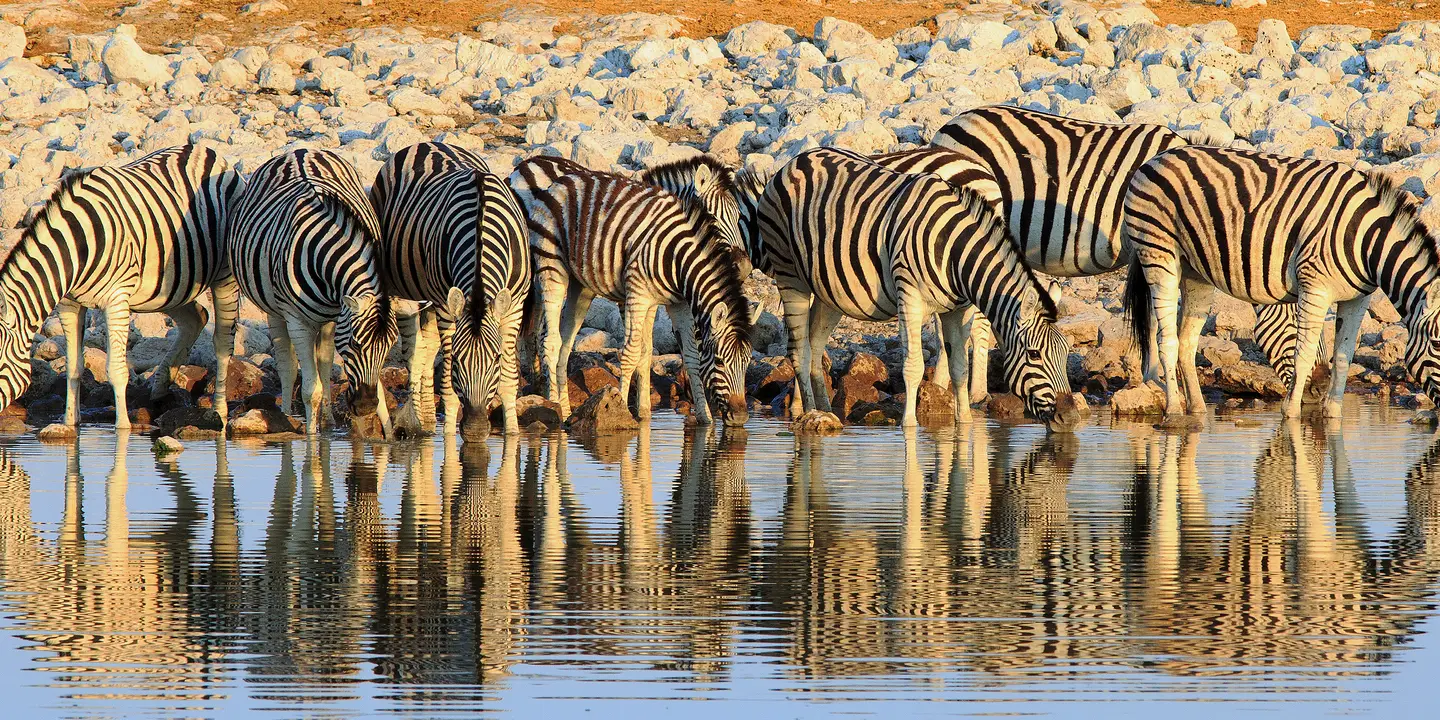
You will have four days of wildlife viewing in Etosha National Park.
Your guide will decide, with your input as to your fauna and flora sighting preferences, what the best routes will be to follow.
All the guides we use know Etosha intimately and will make sure you see all that this great African wildlife park has to offer.
The huge Etosha National Park in north-central Namibia’s Kunene region covers over 22,300 km2 and is synonymous with big game and wide-open spaces.
The name Etosha means “great white place” referring to the huge dry saline pan in the middle of the park, believed to have been formed around 100 million years ago, and one of the most inhospitable places on the planet.
A local Bushman legend about the formation of the Etosha pan tells of how a village was raided and everyone but the women killed. One woman was so upset about the death of her family she cried until her tears formed a massive lake. When the lake dried up nothing was left apart from a huge white pan.
Etosha National Park hosts a staggering amount of wildlife, both common and rare species.
Over 110 mammal species lives in the park, including Elephant, White and Black Rhinos, Lion, Leopard, Cheetah, Giraffe, Hyaena, Zebra, Kudu, Springbok, Gemsbok, Warthog, Black-faced Impala, Honey Badger and more.
It is the best place in the world to see Black Rhinos.
Rewarding wildlife viewing is guaranteed in Etosha! In the drier months of the year, nearly all the animals tend to gather around the waterholes dotted around the huge park.
They come to drink water and are unavoidably followed by predators; this allows you to sit and wait at some of the waterholes and wait for the action to come to you.
This is what sets Etosha apart from other parks in Africa; unique indeed!
Day 5: The Okavango River
You will leave Etosha relatively early this morning after breakfast, making your way northeast.
You are heading for the Caprivi, one of Namibia’s hidden secrets.
The Caprivi with its lush green woodlands and big wide rivers is completely different from what you have experienced in Etosha, and a further illustration that Namibia is not all dust and sand!
Caprivi, or the Caprivi Strip or just “the panhandle”, was named after German Chancellor Leo von Caprivi, who negotiated the acquisition of the land in an 1890 exchange with the United Kingdom at the infamous Berlin Conference.
Caprivi arranged for the strip to be annexed to German South West Africa in order to give Germany access to the Zambezi river and a direct route to Africa’s east coast, where the colony of German East Africa (now part of Tanzania) was situated.
The Caprivi is bordered by Botswana to the south, and by Angola and Zambia to the north, and crossed by the Okavango, Kwando and Zambezi rivers.
Its largest settlement is Katima Mulilo, a lively commercial town on the banks of the Zambezi.
The area is incredibly rich in wildlife, and has become an ecotourism hotspot, with massive growth potential still to be realised.
Within Namibia the Caprivi Strip provides by far the most significant habitat for the critically endangered Wild Dog.
It is also a vital corridor for Elephant herds moving from Botswana and Namibia into Angola, Zambia and Zimbabwe.
Apart from wildlife viewing, other Caprivi activities include angling for Tiger Fish, boat cruises and canoe trips on the rivers.
Depending on your arrival time, you can either relax at the lodge or do a late afternoon game drive in nearby Bwabwata National Park, or even go for a sundowner boat cruise on the river.
Day 6: Bwabwata and Mahango National Parks
After breakfast this morning you will do a mixture of game drives in Bwabwata and Mahango National Parks, as well as a boat cruise on the Okavango river if you didn’t do one yesterday afternoon.
These two parks are part of the much larger Kavango-Zambezi Transfrontier Conservation Area that incorporates 16 parks in 5 countries over its vast 520,000 km2 area. Bwabwata National Park is named after a village in the reserve and means ‘the sound of bubbling water’, and was established in 2007.
The park is 6,100km² in size and extends for about 180km from the Okavango river in the west to the Kwando river in the east, with Angola to the north and Botswana to the south.
On the eastern side of the Okavango river is the other smaller part of the core area, namely Mahango Game Reserve. It covers an area of 24,462 hectares.
It is a flat region of grassland, swamps, shrubland, floodplains and riverine woodland, with a few sand dunes on the horizon.
The parks are home to almost 100 large and numerous small mammal species, including Elephant, big herds of Buffalo, plenty of Hippos, the rare Roan and Sable Antelopes, Greater Kudu, Red Lechwe, Sitatunga, Lion, Leopard, African Wild Dog, Cheetah, Spotted Hyaena, and many more.
Almost 450 bird species have been recorded in these two parks and surrounds, including regional specials like Black-winged Pratincole, Slaty Egret, Wattled Crane, Western banded Snake Eagle, African Skimmer, and African Pygmy Goose.
Between game drives you will have lunch back at the lodge while enjoying more stunning views of the Okavango river.
Day 7: The Kwando River
You start the morning with breakfast after which you proceed further east along the Caprivi Strip.
After a drive of about 3 hours you will reach your next lodge and have lunch.
It is situated on the banks of the beautiful Kwando river. The Kwando is 731 km long and runs from the central plateau in Angola into the Linyanti swamp in the north of Botswana.
Below the swamp, the river is called the Linyanti river and, farther east, the Chobe river, before it flows into the mighty Zambezi river.
In the afternoon you will explore this section of the Bwabwata National Park, or maybe even venture into the 737km2 Mudumu National Park, with a mixture of game drives and boat cruises. You will see elephants, and plenty of them!
Besides elephants, you will try and find Buffalo, Lion, Leopard, Wild Dog, Cheetah, Hyaena, Hippos, Giraffe, Sable and Roan Antelope, Lechwe, Sitatunga, Topi and many others.
Day 8: Chobe National Park
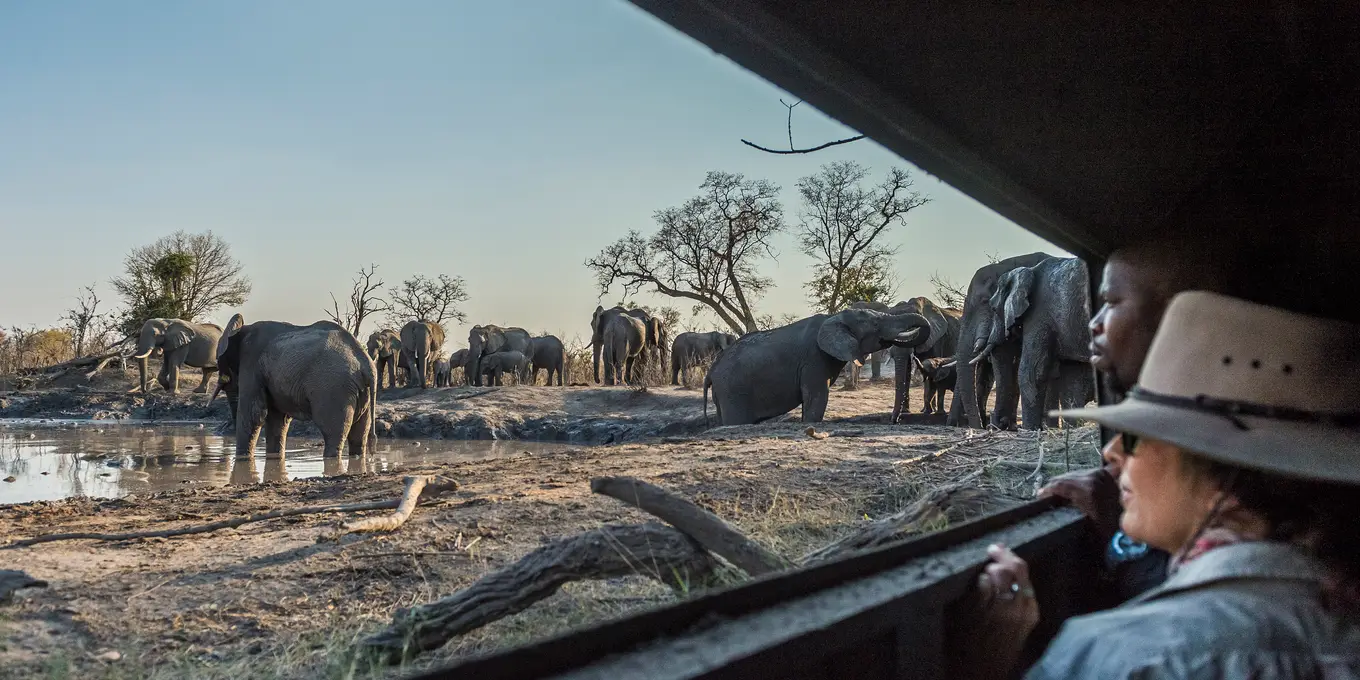
After breakfast this morning you will be driven to Kasane, passing through Katima Mulilo, the unofficial capital of the Caprivi Strip and a town that played a vital role in the South African Border War (1966 to 1990) and the Caprivi Conflict (1994 to 1999).
Katima, as the locals call it, is located on the banks of the Zambezi river in lush riverine vegetation, and is a haven for an incredible amount of bird species, as well as naughty monkeys!
You will cross into Botswana at the Ngoma gate, which must surely be one of the most scenic border posts anywhere, as it overlooks the breathtakingly beautiful Chobe river floodplain.
The last 60 km of your journey will be in Chobe National Park. The 12,000 km² Chobe park, taking its name from the river of the same name, covers an incredible diversity of ecosystems, ranging from arid plains and dry channels to fertile grasslands, dense woodland and watery swamps.
Its diverse habitats support a high density and rich variety of animals and birds. It was Botswana’s first national park, established in 1967.
After settling in at your lodge in Kasane you will enjoy a sundowner drink while revelling in the great view over the Chobe river. Kasane is a small-town bordering Chobe and is the perfect base from which to explore the park.
It is not uncommon to have wildlife walking right down the town’s main street! It is close to Africa’s “four corners”, where Botswana, Namibia, Zambia and Zimbabwe almost meet.
The town briefly obtained international fame when actors Elizabeth Taylor and Richard Burton remarried here in 1975.
Day 9: Chobe National Park
Your entire day is dedicated to exploring Chobe! You will do a game drive and a boat cruise and depending on the time of the year, you will decide which to do first.
Chobe is home to some of Africa’s highest concentrations of game, with the region boasting the largest continuous African Elephant population on the continent, about 80,000 individuals at the last count.
Seeing these giants crossing, playing in and swimming in the Chobe river is a sight you will never forget.
Apart from the large number of pachyderms, Chobe is also known for its excellent game viewing boat cruises along the Chobe river, which attracts plenty of animals and birds, and offers guests some of the best sunset views anywhere in Africa.
In the southwestern area of Chobe lies the Savuti Marsh, hosting some of Africa’s highest year-round concentrations of wildlife, especially predators.
Chobe’s Lions are world renowned for having learnt how to prey on African Elephants, occasionally even adults!
You will naturally see lots and lots of ellies, but you will also search for Buffalo, Lion, Leopard, Wild Dog, Hippos, Crocodile, Giraffe, Sable Antelope, Puku, Lechwe, Waterbuck, Bushbuck and huge herds of zebra.
Some of the special birds you could see include African Spoonbill, Racket-tailed Roller, Slaty Egret, Rosy-throated Longclaw, African Skimmer, Rock Pratincole, Half-collared Kingfisher and White-crowned Lapwing.
Chobe is also famous for being the base for many world-renowned wildlife photographers. Many award-winning photos, videos and documentaries have been captured here.
Day 10: Victoria Falls
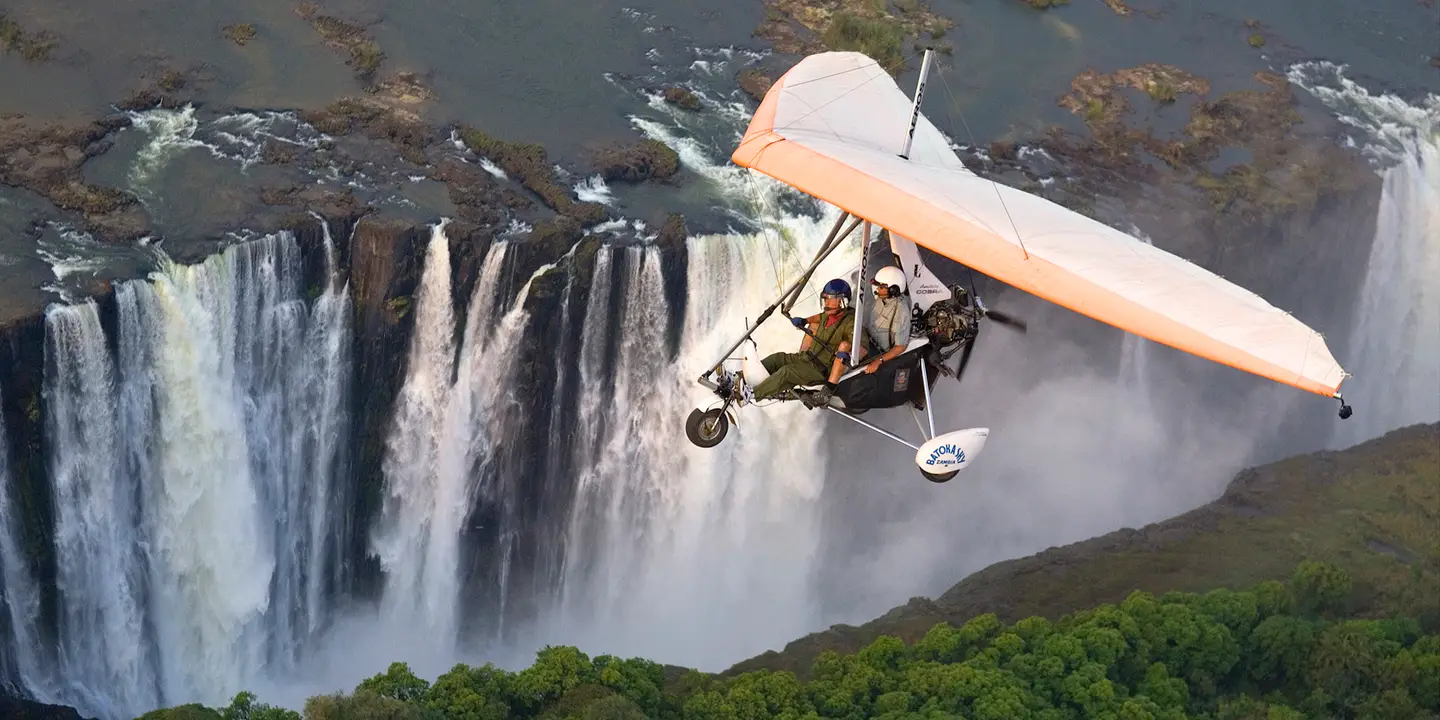
After breakfast and a final activity, you will cross into Zimbabwe, the third and final country on this fantastic 11 Days Etosha, Caprivi, Chobe & Vic Falls Safari.
It is a short drive of aapproximately 80 kilometers from Kasane to Victoria Falls, and remember to keep an eye out for wildlife as this road is known for some incredible roadside sightings.
Upon arrival in the Victoria Falls Town you can go straight to the falls, also known as Mosi-oa-Tunya, or “The Smoke that Thunders”.
Victoria Falls is the largest waterfall on Earth by volume, A UNESCO Natural World Heritage Site and one of the Seven Natural Wonders of the World.
However, no amount of cool facts can prepare you for the sight of the unfathomably vast and powerful waterfalls. It truly is imposing, and a must-see for adventure and wildlife travellers from all over the world.
After settling into your accommodation in the town itself, you will have the afternoon open for relaxing, shopping at one of the curio markets, or any of the following additional (optional) activities:
- Helicopter flights over the falls and surrounding area (highly recommended)
- Bungee jumping
- Sundowner boat cruise on the Zambezi river
- Half-day birding trip around town and the falls
Day 11: Departure
After a relaxing final breakfast, you will be transferred to Victoria Falls International Airport situated nearby for your departure flight. Safe Travels!
End of 11 Days Etosha, Caprivi, Chobe & Vic Falls Safari

